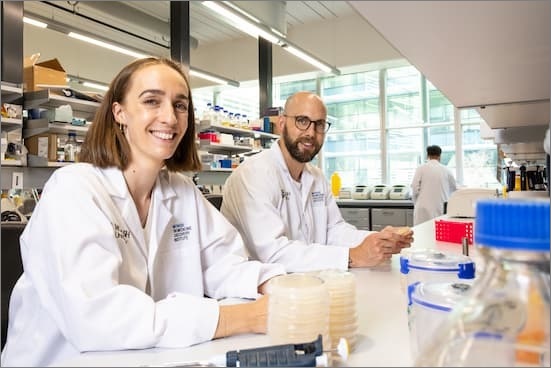Scientists at Victoria’s Monash University have discovered an enzyme that can turn atmospheric hydrogen into electrical current, opening the door for ways of creating electricity from thin air.
“We've known for some time that bacteria can use the trace hydrogen in the air as a source of energy to help them grow and survive, including in Antarctic soils, volcanic craters, and the deep ocean,” said Professor Chris Greening.
“But we didn't know how they did this, until now.”
Professor Greening, Dr Rhys Grinter, and post-graduate student Ashleigh Kropp have led the research which was published in Nature this week under the title ‘Structural basis for bacterial energy extraction from atmospheric hydrogen’.
The research was aimed toward discovering how an enzyme called ‘Huc’, which is present in certain bacteria like those present in soil, successfully oxydises hydrogen from the atmosphere.
What the researchers found was that the “distinct properties” that let these bacteria generate energy from hydrogen is “inherent” to Huc, isolating the enzyme's special ability to create a small, but detectable, electrical current.

[L-R] PhD student Ashleigh Kropp and Dr Rhys Grinter. Image: supplied
“Our data shows that Huc has a large electrochemical overpotential that makes it uniquely tuned for the oxidation of trace quantities of [hydrogen] and for the direct donation of the resulting electrons to the respiratory cofactor menaquinone,” the paper says.
Menaquinone is a vitamin that helps transfer electrons in bacteria.
Dr Grinter said Huc is “extraordinarily efficient” at consuming hydrogen.
“Unlike all other known enzymes and chemical catalysts, it even consumes hydrogen below atmospheric levels – as little as 0.00005% of the air we breathe,” he said.
Now that Huc has been isolated for its energy-creation properties, the common bacteria that produce it could one day be grown in large quantities and used for small devices that could be powered by the air we breathe.
“Once we produce Huc in sufficient quantities, the sky is quite literally the limit for using it to produce clean energy,” Dr Grinter said.










